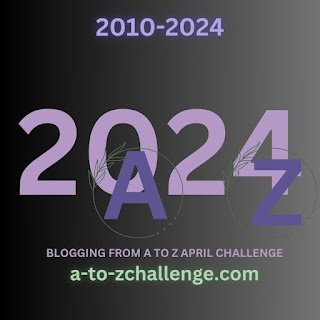
I can’t believe April is nearly over! This month has gone by so fast, but here we are, only one day left of the A to Z Blog Challenge after today. So let’s dive right in to the letter “Y.”
What is “Yes, and . . .” anyway?
This phrase is actually one commonly used in improv and theater classes to help lead a scene or conversation. This can be done between 2 or more people. The first person gives a statement about whatever the topic is, then the next person continues the thought, building on the situation until there’s a lot of detail added, each person answering quickly. Not only does this help build on an idea, but it helps with quick thinking and being willing to incorporate different ideas.
Another version is to say, “Yes, but . . .” in the same style, where the following statements build off the one before. For examples of each, let’s consider the topic of a group of friends making plans to go camping.
Person 1: “Let’s go camping in the mountains next weekend.”
Person 2: “Yes, and we can bring gear to go fishing.”
Person 3: “Yes, and we can cook whatever we catch for dinner.”
Person 1: “Yes, and we’ll take turns prepping the fish and tending the fire.”
OR
Person 1: “Let’s go camping in the mountains next weekend.”
Person 2: “Yes, but it’s supposed to rain.”
Person 3: “Yes, but we can take extra rain gear.”
Person 1: “Yes, but my tent has a hole in it.”
See how it works?
What does that have to do with writing books?
For me, it’s a great way to figure out where my scene is going. It’s especially helpful when I’m in the brainstorming/outlining phase. My initial ideas either come from random sources as I go about my day, or as a “what if” to something I see/read/hear. Once I’ve written down whatever ideas I’d had, I then start organizing my plot points or any particular scenes I’d envisioned. Then I look at what’s missing and begin connecting the dots with scenes that flow from one point to the next.
It’s at this stage where I sometimes employ the “game” if I’m struggling. I’ll simply look at a scene and determine if what needs to come next is a positive or a negative scene; if positive, I use “yes, and,” and if negative, I use “yes, but.” If I’m not sure, I try both, then decide which works best.
One of the best parts is not knowing where you’ll end up. Sometimes it’s nowhere near where you thought it would be, and even if you don’t use the exact idea you came up with, these responses might spark different ideas that you might not have come up with otherwise. You could even try doing the exercise with a friend or group of friends and see what they come up with. If you feel like writing/typing out your response, it can give you something to look back on for future moments of struggle.
————————
Hopefully, this gives you a fun idea to try when you’re stuck. Have you ever played this game before? What methods do you use when you’re trying to come up with ideas?
I’ll see you tomorrow for our final challenge day!
oh I so love this
Thank you very much!